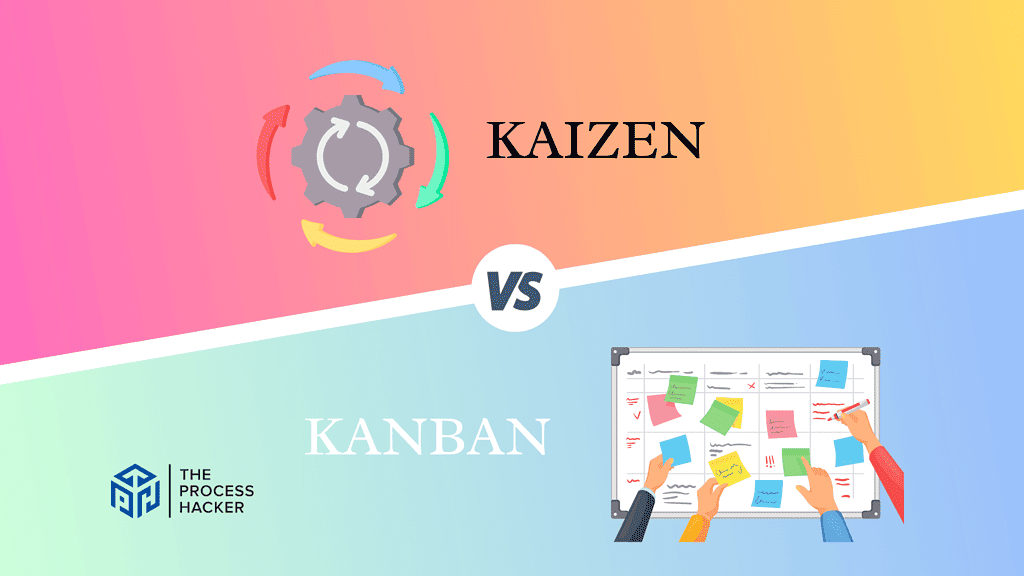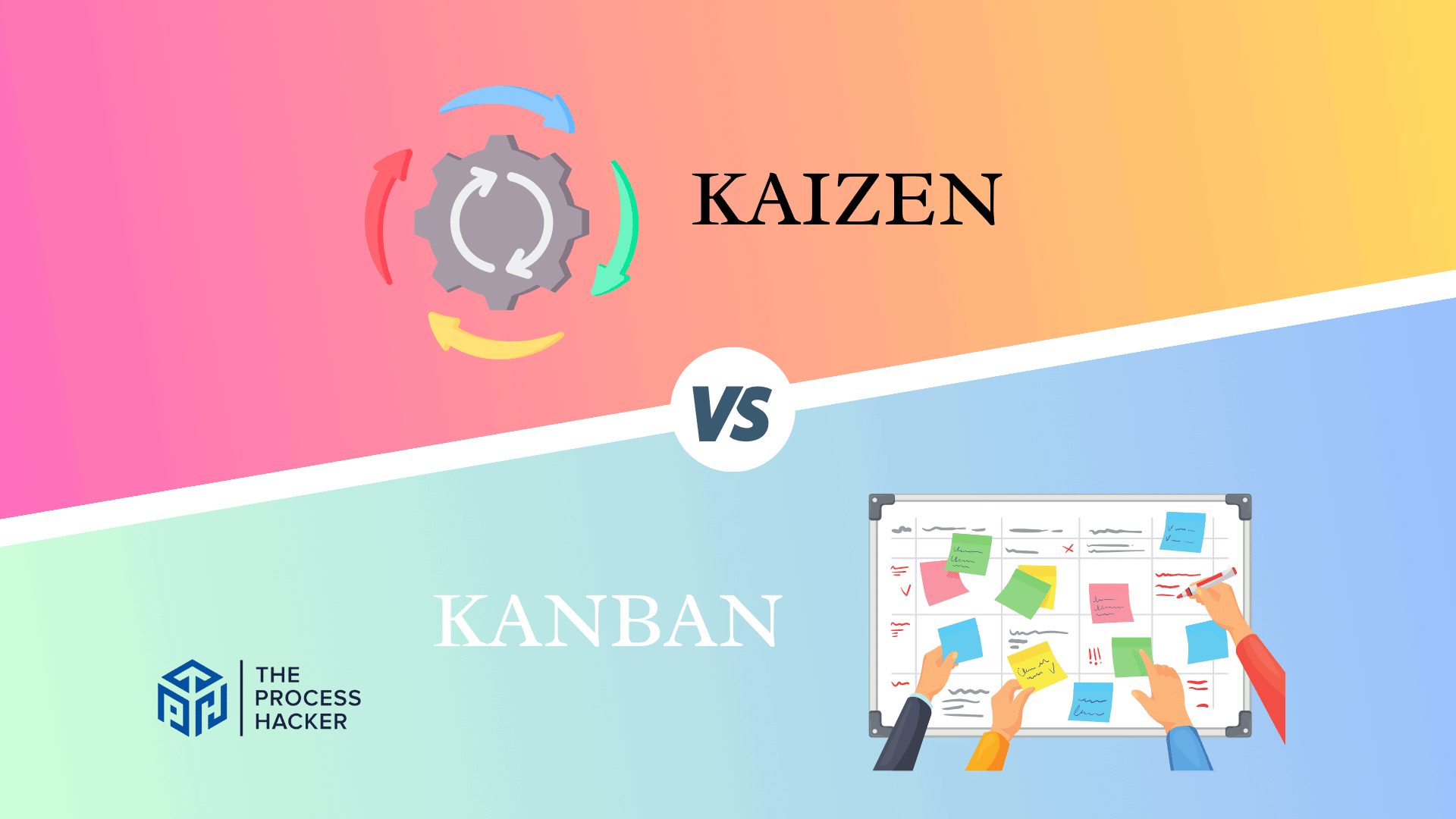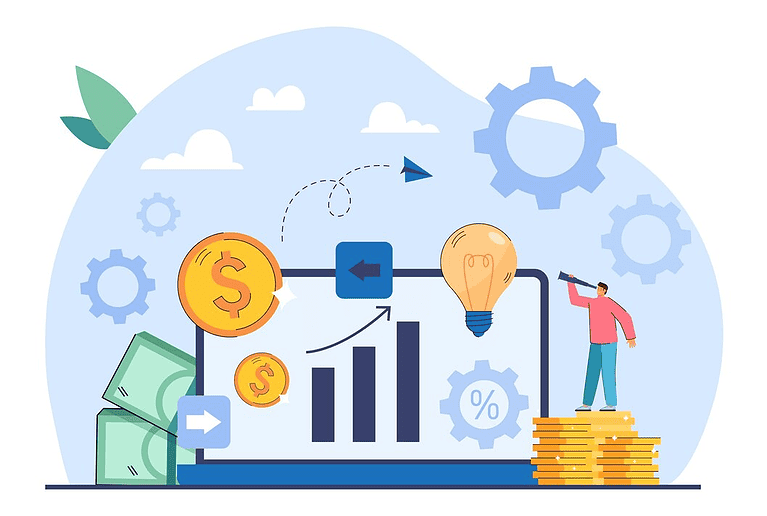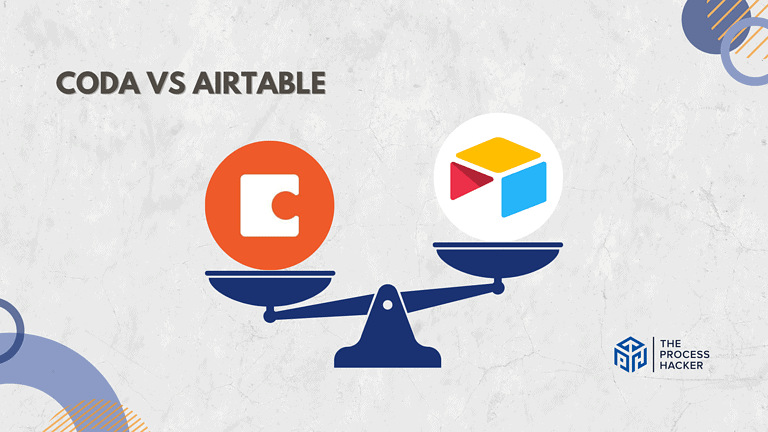Kanban vs Kaizen: Overview, Processes & Differences
Feeling overwhelmed by all the project management methods out there?
Kanban and Kaizen are popular approaches that can help you manage projects more effectively. But what’s the difference between them, and how do they compare? This overview provides an easy-to-understand explanation of their processes, differences & similarities.
With our comprehensive overview at your fingertips, it’ll be easier than ever to pick the best method for you. You gain access to actionable insights into Kanban and Kaizen so you can decide quickly and confidently.
Review this helpful overview of Kanban vs Kaizen for you and your organization!
What Is the Kaizen Philosophy?
The word Kaizen is a Japanese philosophy that focuses on continuous improvement in all aspects of life, personal or professional.
Kaizen is a mindset that encourages regular, incremental changes for better efficiency and quality.
What Is A Kaizen Board?
A Kaizen board is a visual tool used to track and manage continuous improvement efforts within an organization or team. The Kaizen goal helps identify issues, nurture good ideas, plan solutions, track progress, and showcase improvements, thus making the Kaizen philosophy more actionable and measurable.
How to Get Started with the Kaizen Approach
Getting started with Kaizen doesn’t require a significant overhaul of your current practices. Instead, it’s about making small, manageable adjustments to your existing processes. Here’s how you can start implementing the Kaizen process just like every team embracing Kaizen:
#1) Identify Areas for Continuous Improvement
The first step in the Kaizen approach is identifying areas to improve in your organization. This literally translates to anything from a business process, a personal habit, or even a specific task you perform regularly. Review your activities and ask yourself, “Where can I improve?”
#2) Set Achievable Goals
Once you’ve identified an area for improvement, set a clear, achievable goal related to it.
Remember, Kaizen is about small, incremental changes, so your goal should reflect this philosophy. For example, if you want to improve your time management, your goal might be to reduce wasted time by 10% within a month.
#3) Implement Small Changes
Now that you have your goal start implementing small changes to help you reach it. These changes should be easy to integrate into your current routines.
Suppose your goal is to reduce wasted time. In that case, you might start by eliminating one unnecessary task from your daily routine or setting specific times for checking emails instead of doing it sporadically throughout the day.
Remember, the key to Kaizen is consistency. Stick with minor changes, monitor your progress, and adjust as necessary. Over time, you’ll see significant improvements from these seemingly minor adjustments.
What Is The Kanban Methodology?
Kanban is a visual workflow management system that aims to help you manage and streamline your tasks more effectively.
Originating from the Japanese manufacturing and production environment to monitor assembly lines, it’s now widely used across various industries.
The primary goal of Kanban is to identify potential bottlenecks in your processes and fix them so work can flow through them cost-effectively at an optimal speed or set of logical pieces. It is represented visually on a Kanban board with horizontal column headings, allowing you to see the state of every piece of work at any time.
What Are Kanban Cards?
Kanban cards are a crucial component of the Kanban methodology that you’ll find quite helpful. These cards represent individual tasks or work environment items in your process. Each card typically includes details about the task, such as its description, who is responsible for it, metrics, deadlines, and any other relevant information.
You’ll place these cards on your Kanban board, moving them through various stages as the work progresses. This visual representation helps you track each task’s status and provides a clear workflow overview, making it easier for you and your team to manage work efficiently and effectively.
Application: Agile Project Management
Kanban has proven to be an extremely effective tool in agile project management. Agile methodologies are all about adaptability and continuous improvement, and Kanban facilitates exactly that.
With a Kanban chart, you can simply visualize the entire project workflow and individual categories, from backlog to completion. Each task, represented by a Kanban card, moves through different stages of the process, making it easy for everyone in the team to see the status of various tasks and understand what needs to be done next.
This transparency enables teams to identify bottlenecks and inefficiencies in real-time, allowing for immediate adjustment and continuous actual workflow. Moreover, by limiting the amount of work-in-progress, teams can focus on completing tasks at hand before taking up new ones, thereby increasing efficiency and reducing the time taken in the delivery system.
Whether you’re a project manager looking to streamline your processes or a team member wanting to stay on top of your tasks, implementing the Kanban methodology in your Agile Methodology can ultimately lead to large gains, more efficient workflows, and successful project outcomes.
How to Get Started with the Kanban System
#1) Define Your Workflow Stages
The first step in implementing the Kanban system is to define the stages of your workflow. Think about the different phases a task goes through from start to finish in your project or process.
Typical stages include ‘To Do,’ ‘In Progress,’ and ‘Done,’ but you can customize these based on your specific needs. Once you have these stages, you can visualize them, usually on a board, creating columns for each stage. This setup will give you a clear structure to organize your tasks.
#2) Create Cards for Tasks
Next, you’ll create cards for each task or work item. Each card should include critical details about the task, such as its name, description, who’s responsible for it, and any deadlines or important notes.
You can use physical cards on a physical board or digital cards if you’re using an online tool. Place each card in the appropriate stage on your board. This visual representation lets you and your team easily see what needs to be done and track progress.
#3) Limit Work in Progress in Kanban Board
A crucial aspect of implementing the Kanban process is limiting the work in progress (WIP) at any given stage. This means setting a maximum number of tasks that can be in a particular stage at one time.
Doing this ensures that your team is calm and can focus on completing tasks efficiently before moving on to new ones. It also helps in identifying bottlenecks in the process. Start by setting a reasonable limit based on your team’s capacity and adjust as you go along based on your team’s experience and workflow needs.
Bonus: Use Kanban Views in Notion, Monday, or ClickUp
Further, project management tools like Notion, Monday, and ClickUp have built-in Kanban board views. Thus, I recommend using them with your favorite project management software! If you don’t have a tool, check out Notion!
Most of these software tools allow you to get started for free, and its Kanban boards are incredibly powerful. By implementing Kanban views with tools like Notion, Monday, or ClickUp, you can take your Kanban implementation to the next level!
The Relationship Between Kaizen and Kanban

Understanding the relationship between Kaizen and Kanban helps you streamline your processes and improve efficiency. While they are distinct concepts, they complement each other beautifully in practice.
With its focus on ongoing improvements, the Kaizen board encourages you to always look for ways to improve your workflow and processes. This philosophy aligns perfectly with Kanban practices, which provide a visual and structured way to manage your tasks and projects.
When you integrate Kaizen boards into your Kanban process, you’re setting up a dynamic where your workflow is visible and manageable and consistently evolving for the better. When you review your Kanban board, you can ask yourself, “How can this process be improved?”
This mindset fosters an ongoing refinement and efficiency environment, where you’re constantly finding new ways to enhance productivity and reduce waste in your work.
In essence, while Kanban gives you the framework for managing your work, Kaizen boards infuse this framework with a spirit of perpetual growth mindset and even with constant small improvements, ensuring that your processes always evolve to meet the changing demands of your projects and team dynamics.
Final Thoughts on Kaizen and Kanban
As we wrap up our exploration of Kanban and Kaizen, I hope you’ve gained valuable insights into how these methodologies can enhance your workflow and productivity!
Remember, Kanban is your roadmap for stream mapping tasks visually and efficiently. At the same time, Kaizen is the mindset of continuous improvement that guides you and your organization to seek ways to improve things constantly.
By combining the Kanban and Kaizen approaches, you’re organizing your work and cultivating a dynamic, evolving process that adapts and improves over time. This integration can be a game-changer for your personal productivity or your team’s efficiency.
As someone who’s explored these methodologies, I encourage you to experiment with the process in your own business or projects.
The beauty of Kanban and Kaizen lies in their flexibility, ability to foster open communications, and adaptability to different environments and needs.
So, give the process a try, see the difference Kanban vs Kaizen can make to your organization, and remember, the journey to better productivity is always ongoing, and these tools are here to guide you along the way!







